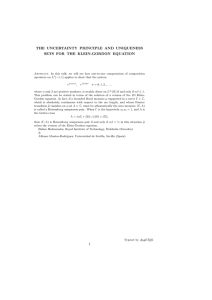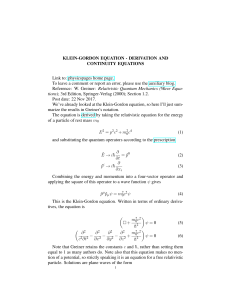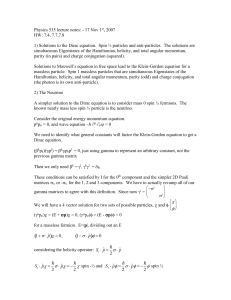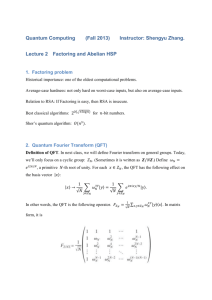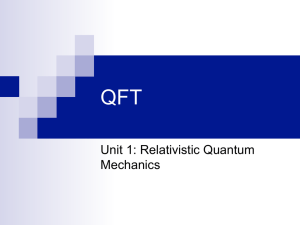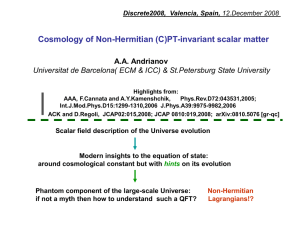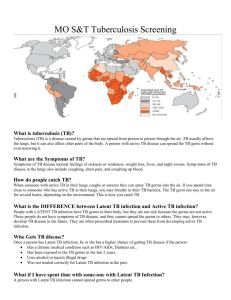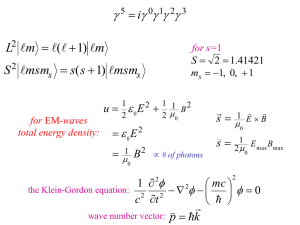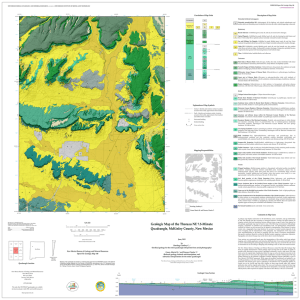Review of Winter 2008 Lecture Series Andrew Forrester March 30, 2008
advertisement
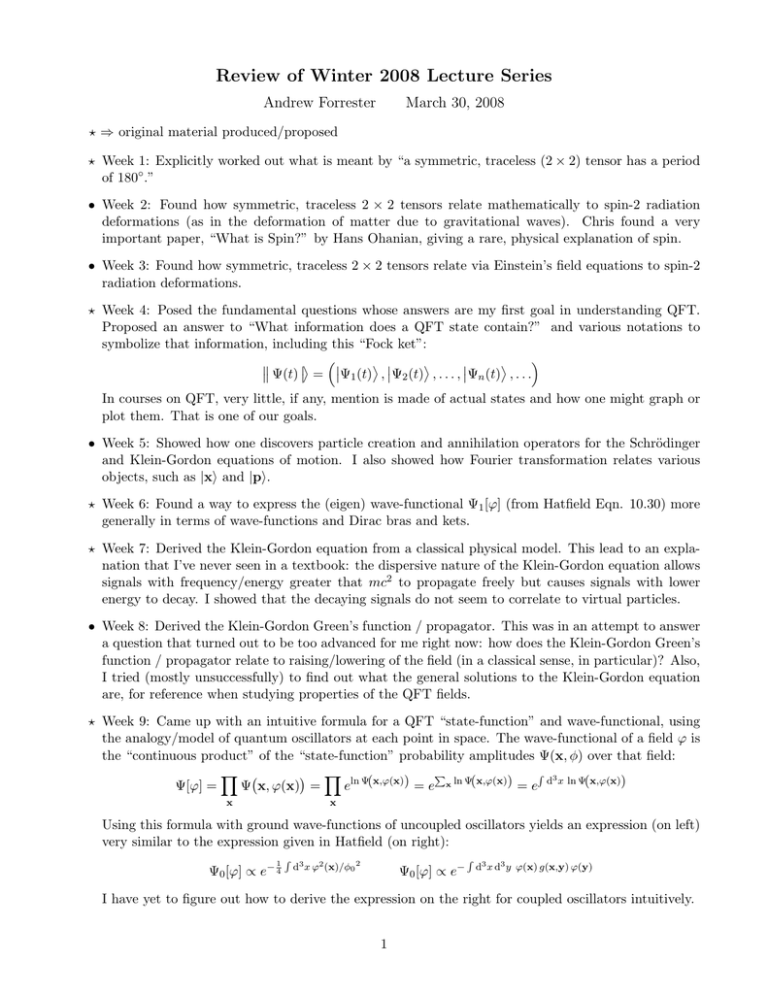
Review of Winter 2008 Lecture Series Andrew Forrester March 30, 2008 ? ⇒ original material produced/proposed ? Week 1: Explicitly worked out what is meant by “a symmetric, traceless (2 × 2) tensor has a period of 180◦ .” • Week 2: Found how symmetric, traceless 2 × 2 tensors relate mathematically to spin-2 radiation deformations (as in the deformation of matter due to gravitational waves). Chris found a very important paper, “What is Spin?” by Hans Ohanian, giving a rare, physical explanation of spin. • Week 3: Found how symmetric, traceless 2 × 2 tensors relate via Einstein’s field equations to spin-2 radiation deformations. ? Week 4: Posed the fundamental questions whose answers are my first goal in understanding QFT. Proposed an answer to “What information does a QFT state contain?” and various notations to symbolize that information, including this “Fock ket”: Ψ(t) = Ψ1 (t) , Ψ2 (t) , . . . , Ψn (t) , . . . In courses on QFT, very little, if any, mention is made of actual states and how one might graph or plot them. That is one of our goals. • Week 5: Showed how one discovers particle creation and annihilation operators for the Schrödinger and Klein-Gordon equations of motion. I also showed how Fourier transformation relates various objects, such as |xi and |pi. ? Week 6: Found a way to express the (eigen) wave-functional Ψ1 [ϕ] (from Hatfield Eqn. 10.30) more generally in terms of wave-functions and Dirac bras and kets. ? Week 7: Derived the Klein-Gordon equation from a classical physical model. This lead to an explanation that I’ve never seen in a textbook: the dispersive nature of the Klein-Gordon equation allows signals with frequency/energy greater that mc2 to propagate freely but causes signals with lower energy to decay. I showed that the decaying signals do not seem to correlate to virtual particles. • Week 8: Derived the Klein-Gordon Green’s function / propagator. This was in an attempt to answer a question that turned out to be too advanced for me right now: how does the Klein-Gordon Green’s function / propagator relate to raising/lowering of the field (in a classical sense, in particular)? Also, I tried (mostly unsuccessfully) to find out what the general solutions to the Klein-Gordon equation are, for reference when studying properties of the QFT fields. ? Week 9: Came up with an intuitive formula for a QFT “state-function” and wave-functional, using the analogy/model of quantum oscillators at each point in space. The wave-functional of a field ϕ is the “continuous product” of the “state-function” probability amplitudes Ψ(x, φ) over that field: R 3 P Y Y ln Ψ(x,ϕ(x)) Ψ[ϕ] = Ψ x, ϕ(x) = e = e x ln Ψ(x,ϕ(x)) = e d x ln Ψ(x,ϕ(x)) x x Using this formula with ground wave-functions of uncoupled oscillators yields an expression (on left) very similar to the expression given in Hatfield (on right): 1 Ψ0 [ϕ] ∝ e− 4 R d3 x ϕ2 (x)/φ0 2 Ψ0 [ϕ] ∝ e− R d3 x d3 y ϕ(x) g(x,y) ϕ(y) I have yet to figure out how to derive the expression on the right for coupled oscillators intuitively. 1 ? Week 10: Learned functional calculus by extensively charting the analogy between functionals and functions of finite-dimensional vectors. Explored the meaning of “second order functional derivatives” (an issue that comes up in QFT) and proposed a functional Taylor series (and a functional gradient). ? Bonus: Explored the proper meanings of continuous products and sums. Further developed the implications of the intuitive wave-functional given above (Week 9). 2
